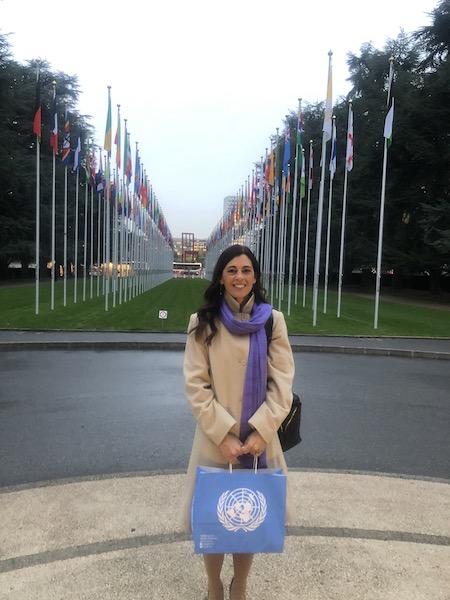Child sexual abuse perpetration can be prevented: The time has come to enact effective prevention efforts

The following is an excerpt of Dr. Elizabeth Letourneau’s speech at the 30th Anniversary of the Convention on the Rights of the Child at the United Nations in Geneva, Switzerland on November 14, 2019. The content was edited for length.

For more than 30 years I’ve focused my career on developing, evaluating, and disseminating effective child sexual abuse prevention efforts.
You may be surprised to learn that about half of sexual offenses committed against children are by children under the age of 18, usually under the age of 15. Indeed, in the United States, the peak age for committing a sexual offense against a prepubescent child is 14. This may seem surprising, but it makes sense if you consider that children who are just beginning to engage in sexual behaviors are vulnerable to making mistakes and bad decisions.
-
They don’t understand consent
-
They don’t realize that their younger friends and family members are off-limits
-
They don’t know that sexual images of children are illegal
-
And we don’t teach them.
Eventually, children do figure these things out. We see a steep drop in the number of sex crimes committed by older youth starting at age 15. A meta-analysis based on more than 33,000 juvenile sex crime cases found a 5-year sexual recidivism rate of less than 3%.
Rather than waiting for children to figure out the complicated rules of sexual behavior on their own, we believe it makes more sense to give children – and their parents and educators - the knowledge, skills and tools to successfully navigate early sexuality. That is why we developed a school-based perpetration prevention program that we call Responsible Behavior with Younger Children. The premise is simple: teach kids what they need to know to avoid making mistakes and bad decisions in the first place.
In an initial randomized controlled trial, we implemented the program across four public middle schools and collected pre- and post-treatment data from 150 students ages 11 to 13, and our early findings are very promising.
Of course, developing, evaluating and disseminating effective programming requires sustained resources. The initial evaluation of Responsible Behavior with Younger Children was supported by a $275,000 grant from the National Institutes of Health, the United States’ primary funder of health research. To my knowledge, this is the first perpetration prevention study that NIH has ever funded. The same year that NIH funded my study, the federal government spent about 7 billion dollars to incarcerate sex offenders.
Let me repeat that: Every year, the United States spends about 7 billion dollars to lock up people who already committed sex crimes and almost no money to prevent people from engaging in sexually abusive behavior in the first place. I realize that no other country spends as much money on incarceration as the United States. But like the United States, every other country spends more on punishment than on prevention.
Only about 5% of sex crimes are perpetrated by people with prior sex crime convictions. Thus, after-the-fact interventions such as incarceration fail to address 95% of the problem. Spending enormous resources on punishment and almost none on prevention is a choice. Children are harmed by this choice. We are all harmed by this choice.
So why do we do this? Why do we put nearly all our time, money, and resources into after-the-fact responses and almost none into prevention? I believe it’s because most people - and perhaps some of you - don’t really believe that child sexual abuse perpetration can be prevented. This is simply not true.
What is needed is a concerted effort to shift this paradigm and to promote a more accurate and compelling understanding of child sexual abuse as a preventable public health problem.
I am happy to say that we are having some success in shifting this paradigm in the United States. My [Moore] Center led a coalition of 25 other youth serving organizations in urging Congress to allocate new funding in support of child sexual abuse prevention research. As a result, the House Committee on Labor, Health, and Human Services included two million dollars in their budget for fiscal year 2020. The Senate Committee did not include any such funds, but did add a statement acknowledging the importance of child sexual abuse prevention research.
What can the United Nations do?
-
I believe the United Nations can use its extraordinary power to convene and persuade to help shift this paradigm. To encourage states [member countries] to address child sexual abuse as the preventable public health problem that it is.
-
I believe the United Nations can collaborate with states to identify feasible ways to invest in prevention efforts for child sexual abuse, as they already do for other forms of childhood adversity.
-
Holding people accountable for harmful behavior and addressing the needs of survivors are necessary but insufficient responses to child sexual abuse.
-
The time has come to enact a truly comprehensive approach that includes investing in the development, evaluation, and dissemination of effective perpetration prevention efforts.
